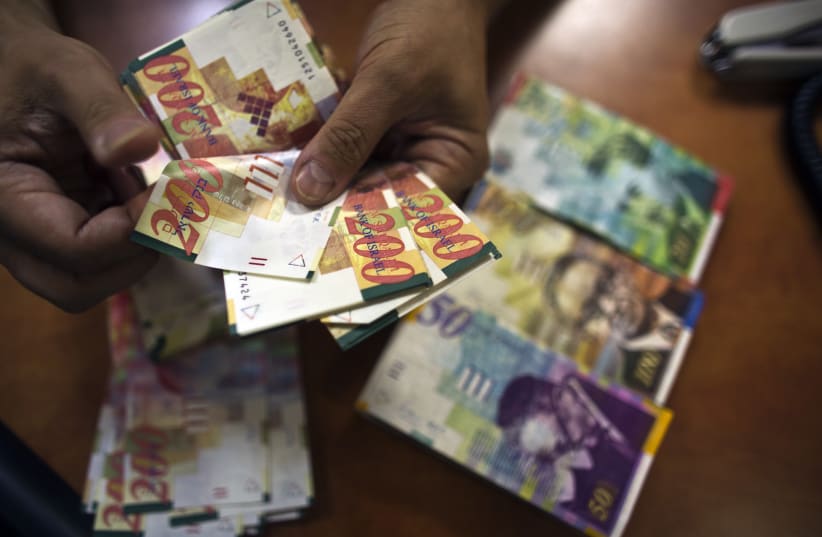The strong shekel is getting even stronger. The national currency was trading at NIS 3.214 to the US dollar on Thursday afternoon, the strongest since mid-January. The rate stood at NIS 3.30 just two weeks ago.
The dollar and other global currencies have weakened as of late, said Kobi Levi, head of the market strategy desk at Leumi Capital Markets. “There is a trend of dollar weakness around the world, while in the US, weak growth data along with weak employment data and a relatively conservative interest rate announcement by the Fed support a weakening dollar. In addition, in the domestic market, foreigners are selling dollars in a low liquidity environment, as is typical of the summer months, and intensifies the trend of the shekel strengthening against most of the world’s currencies.”
Levi said he expects the shekel to stay near NIS 3.20 through September, and that the bank’s 12-month forecast remains unchanged, at an average rate of NIS 3.18-3.28 over the coming year.
In April Levi called a NIS 3.30 rate the “new normal,” after years of the shekel trading at an average rate of NIS 3.60.
The shekel began strengthening rapidly last November, due largely to a rising surplus in Israel’s balance of payments. It reached as low as NIS 3.13 to the dollar on January 13, its strongest in decades. However, the Bank of Israel intervened in the market at the time, announcing it would buy up to $30 billion of dollars during 2021 in order to weaken the shekel. The currency has hovered between NIS 3.24 and NIS 3.33 since February.
The Bank of Israel has already spent $25 billion buying dollars, Levi noted. Bank of Israel Gov. Amir Yaron has indicated the central bank will probably have to go over the $30b. target to keep prices stable.
Levi said Israeli importers should take advantage of the strong shekel to buy foreign currency, especially non-dollar options like the Japanese yen and the British pound.
As for exporters, the situation is painful.
Manufacturers Association President Ron Tomer called on the bank of Israel to “consider all possible tools, including negative interest rates, in order to mitigate the fall in the dollar.” Small increases in the shekel’s value easily translate into billions of shekels of higher expenses and lower revenue for exporters, including virtually all of the country’s hi-tech sector.
